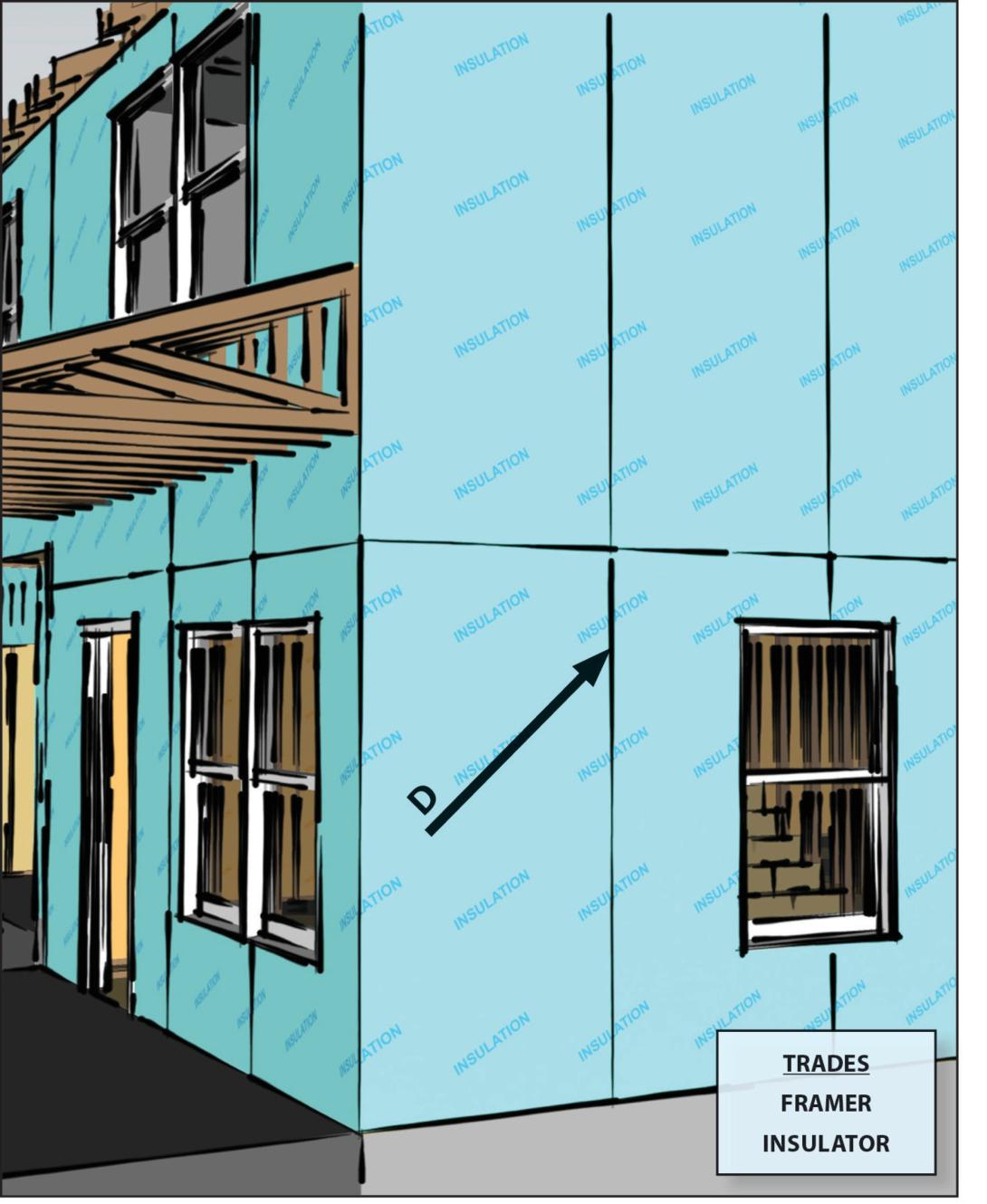
Exterior Finish
Continuous Rigid Insulation on Exterior Walls
Continuous rigid insulation can be installed on the exterior walls of homes to provide extra R-value and enhanced air sealing. It can be installed over or in place of sheathing products such as plywood or OSB.
Thermal bridging allows heat to escape from the inside of the home to the outside. It occurs wherever framing components with low R-values such as wood studs span from the interior to the exterior of the building. In traditional home construction, wood framing comprises nearly one-fourth of the wall area. Rigid insulation attached to the exterior side of the framing provides a continuous insulating layer that reduces thermal losses through thermal bridging.
There are three types of rigid insulation: expanded polystyrene (EPS), extruded polystyrene (XPS), and polyisocyanurate (polyiso). R-values range from 3.2 to 6.5 per inch, depending on the type. Rigid insulation can be installed over or in place of plywood, OSB, or other wall sheathing. It can be located exterior or interior of the housewrap; in some cases, it can take the place of housewrap as the wall’s drainage plane. All seams must be sealed with a compatible tape and according to the manufacturer’s fastening schedule.